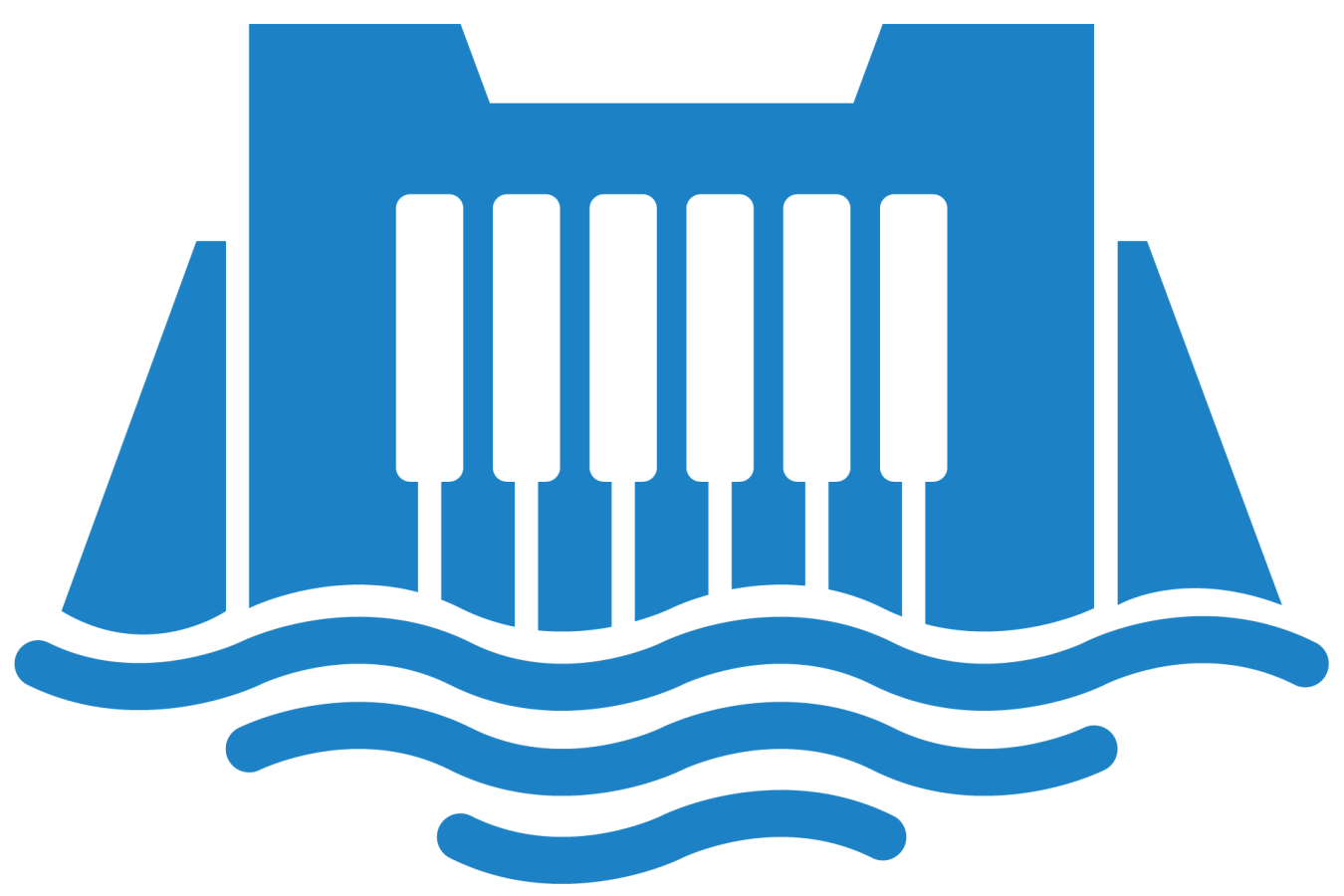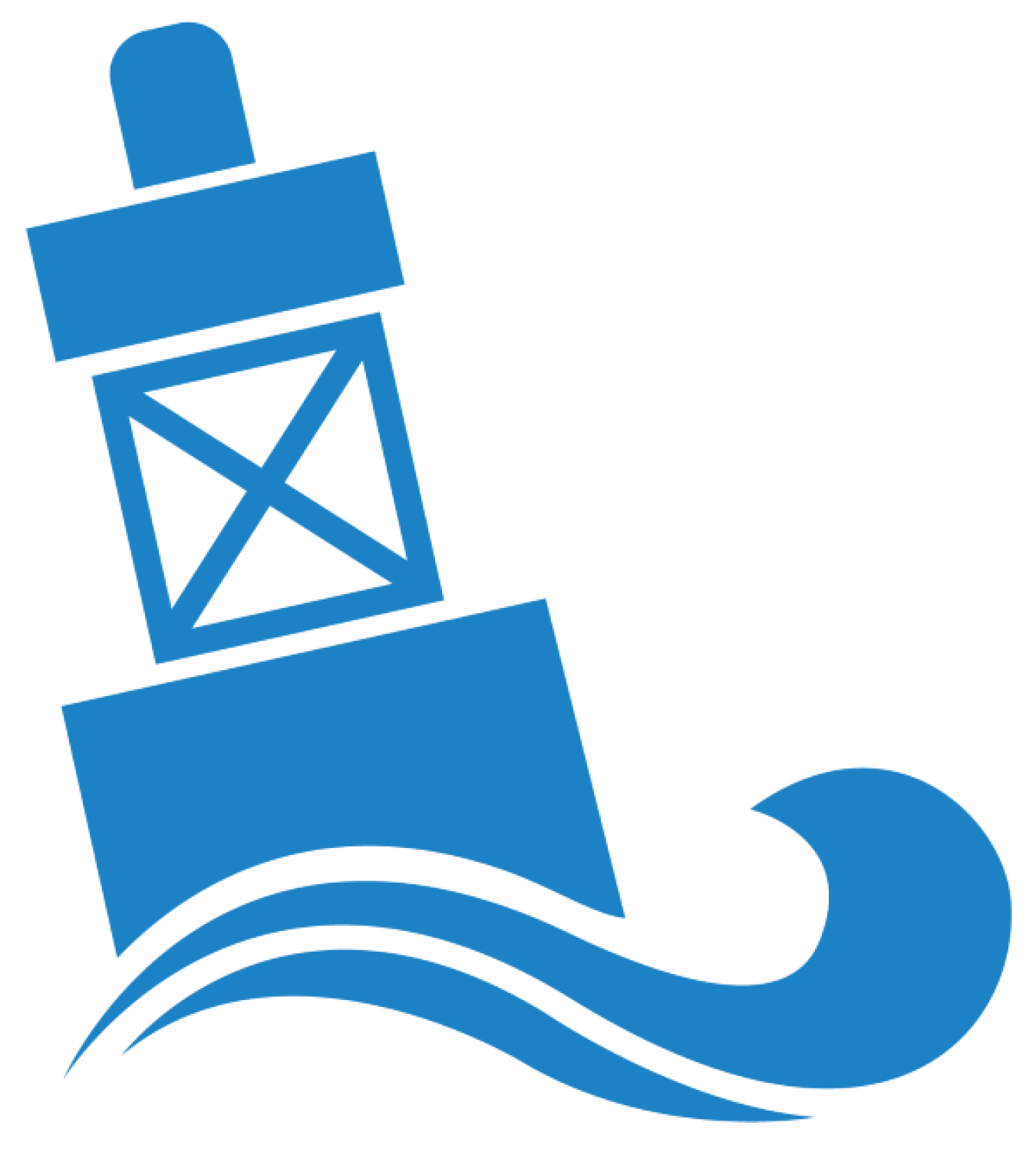In 2021 and 2022, the U.S. Department of Energy’s (DOE) Water Power Technologies Office (WPTO) advanced hydropower and marine energy technologies to help realize water power’s full potential to contribute to a clean energy future.
WPTO 2021–2022 Accomplishments Report
Letter from the Acting Assistant Secretary for Energy Efficiency and Renewable Energy (EERE) Alejandro Moreno
Incredible work is underway across the U.S. Department of Energy to make progress toward the nation’s goals of a carbon-free electricity sector by 2035 and a net-zero-emissions economy by 2050. Throughout Fiscal Year 2022, our Water Power Technologies Office (WPTO) and its partners at national laboratories, academic institutions, companies, and other organizations led efforts crucial to advancing the hydropower and marine energy technologies that have an important role in achieving these goals and our clean energy future. Read the Letter
Letter from the WPTO Director Jennifer Garson
I am pleased to share the 2021–2022 Accomplishments Report from the U.S. Department of Energy’s Water Power Technologies Office (WPTO). This report offers a glimpse into the important work happening across our Hydropower and Marine Energy programs with partners at national laboratories, academic institutions, companies, and other organizations. Read the Letter
Projects Across WPTO
Along with projects supported through WPTO's Hydropower and Marine Energy programs, the office led crucial cross-office initiatives and championed important efforts cross DOE.
 WPTO released its first Multi-Year Program Plan, a comprehensive report outlining the office’s future research, development, demonstration, and commercial activities.
WPTO released its first Multi-Year Program Plan, a comprehensive report outlining the office’s future research, development, demonstration, and commercial activities. In Phase One, the Inclusive Energy Innovation Prize awarded a $3.6 million prize pool to 18 organizations working to advance the Justice40 Initiative by prioritizing climate solutions and energy justice for disadvantaged communities.
In Phase One, the Inclusive Energy Innovation Prize awarded a $3.6 million prize pool to 18 organizations working to advance the Justice40 Initiative by prioritizing climate solutions and energy justice for disadvantaged communities.
Hydropower Program
Hydropower is one of the oldest and largest sources of renewable energy and uses the flow of moving water to generate clean electricity that powers homes, businesses, and industries. In 2021, hydropower accounted for 31.5% of U.S. renewable electricity generation, while pumped storage hydropower (PSH) remains the largest contributor to U.S. energy storage, representing roughly 93% of all commercial storage capacity in the United States.
WPTO's Hydropower Program conducts research, development, demonstration, and commercial activities to advance transformative, cost-effective, reliable, and environmentally sustainable hydropower and PSH technologies; better understand and capitalize on opportunities for these technologies to support the nation’s rapidly evolving grid; and improve energy-water infrastructure and security.
WPTO envisions a U.S. hydropower and pumped storage industry that modernizes and safely maintains existing assets; responsibly develops new low-impact hydropower; promotes environmental sustainability; and supports grid reliability, integration of other energy resources, and energy-water systems resilience. To achieve this vision, WPTO’s Hydropower Program supports R&D projects across five activity areas. Success stories in the WPTO 2021–2022 Accomplishments Report are presented within these activity areas:
 Natel Energy’s Restoration Hydro Turbine is the first in the industry to enable safe passage for large and small fish while also meeting installation configurations for a wide variety of hydropower facilities.
Natel Energy’s Restoration Hydro Turbine is the first in the industry to enable safe passage for large and small fish while also meeting installation configurations for a wide variety of hydropower facilities.- Researchers created and tested a composite hydropower turbine runner blade and found it performed nearly identically to traditional blades made of stainless steel.
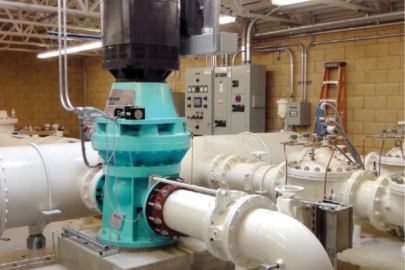 An Oak Ridge National Laboratory report found opportunities to develop hydropower on conduits in every state, totaling 1.41 gigawatts of new generating potential.
An Oak Ridge National Laboratory report found opportunities to develop hydropower on conduits in every state, totaling 1.41 gigawatts of new generating potential. Oak Ridge National Laboratory developed two tools and published a report to aid developers making decisions about whether to add power-generating infrastructure to dams that currently do not generate power.
Oak Ridge National Laboratory developed two tools and published a report to aid developers making decisions about whether to add power-generating infrastructure to dams that currently do not generate power.
 Natel Energy developed its Restoration Hydro modular concept, which combines watershed restoration efforts with new hydropower development.
Natel Energy developed its Restoration Hydro modular concept, which combines watershed restoration efforts with new hydropower development.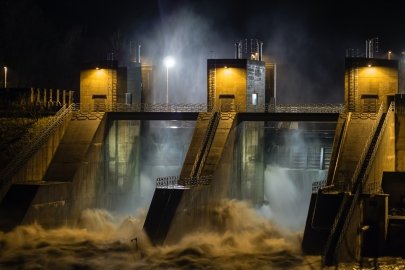 Researchers created the waterSHED tool to help demonstrate the design, operation, and feasibility of new, small hydropower projects at streams and sites with existing water infrastructure.
Researchers created the waterSHED tool to help demonstrate the design, operation, and feasibility of new, small hydropower projects at streams and sites with existing water infrastructure.
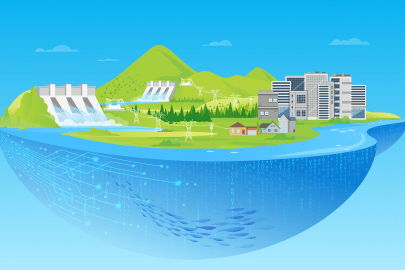 WPTO launched the H2Os Prize, and innovators competed in two prize phases and developed new solutions that can help advance hydropower’s contributions to the grid.
WPTO launched the H2Os Prize, and innovators competed in two prize phases and developed new solutions that can help advance hydropower’s contributions to the grid.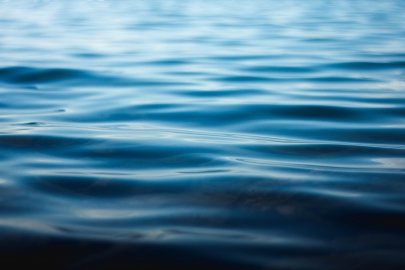 Two national laboratory studies found opportunities to expand and innovate pumped storage hydropower in the United States.
Two national laboratory studies found opportunities to expand and innovate pumped storage hydropower in the United States.
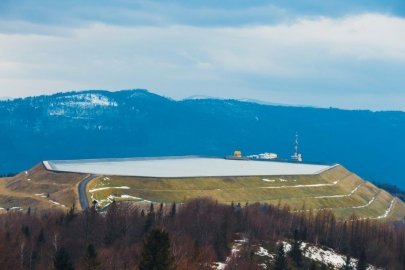 Analyses from Argonne National Laboratory and Pacific Northwest Laboratory help hydropower operators and developers better understand how hydropower facilities can integrate and be profitable on the changing electricity grid.
Analyses from Argonne National Laboratory and Pacific Northwest Laboratory help hydropower operators and developers better understand how hydropower facilities can integrate and be profitable on the changing electricity grid.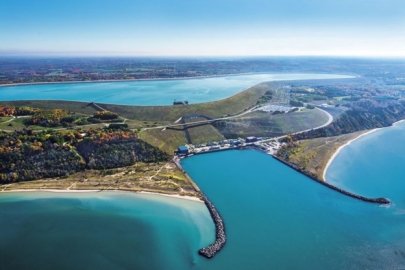 A new optimization model for pumped storage hydropower can help grid operators decide how to distribute a facility’s time between generating power and pumping water to store energy.
A new optimization model for pumped storage hydropower can help grid operators decide how to distribute a facility’s time between generating power and pumping water to store energy.
 A study on the sustainability of closed-loop pumped storage hydropower identified the technology as a promising solution to grid-scale energy storage.
A study on the sustainability of closed-loop pumped storage hydropower identified the technology as a promising solution to grid-scale energy storage. A General Electric Research-led team demonstrated a new hydropower turbine design and monitoring methodology that allows plant operators to adjust power output in a few seconds to meet energy demand without needing to start or stop units.
A General Electric Research-led team demonstrated a new hydropower turbine design and monitoring methodology that allows plant operators to adjust power output in a few seconds to meet energy demand without needing to start or stop units.
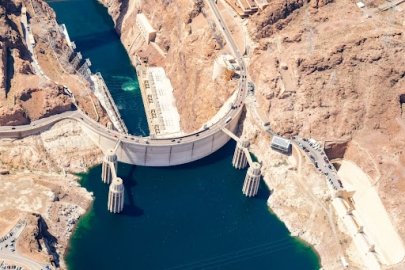 A national laboratory-led project developed a one-dimensional hydropower digital twin that virtually represents the inner workings of a real hydropower plant.
A national laboratory-led project developed a one-dimensional hydropower digital twin that virtually represents the inner workings of a real hydropower plant. The Cybersecurity Value-at-Risk Framework tool enables hydropower owners and operators to understand their individual plant’s cybersecurity risk and the best approach to mitigate those risks.
The Cybersecurity Value-at-Risk Framework tool enables hydropower owners and operators to understand their individual plant’s cybersecurity risk and the best approach to mitigate those risks.
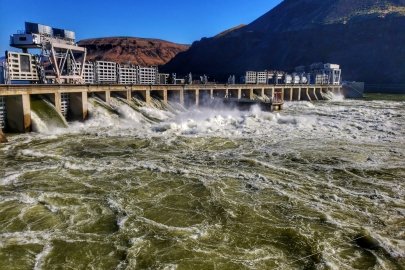 An assessment found the U.S. hydropower supply chain effectively supports the existing fleet, but anticipated new construction and the need to refurbish, upgrade, and relicense facilities show a need to scale up domestic supply chain activities.
An assessment found the U.S. hydropower supply chain effectively supports the existing fleet, but anticipated new construction and the need to refurbish, upgrade, and relicense facilities show a need to scale up domestic supply chain activities.
 A team of researchers optimized deep learning software and created software that can automatically detect migrating fish near hydropower facilities.
A team of researchers optimized deep learning software and created software that can automatically detect migrating fish near hydropower facilities. A Pacific Northwest National Laboratory study found hydropower could still be relied upon to supply flexible power during periods of high energy demand—even during the most severe droughts.
A Pacific Northwest National Laboratory study found hydropower could still be relied upon to supply flexible power during periods of high energy demand—even during the most severe droughts.
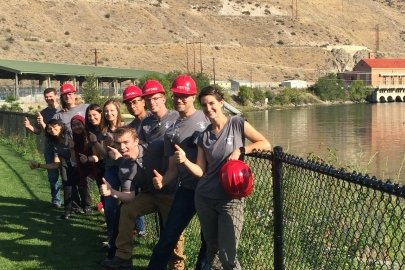 WPTO launched the inaugural Hydropower Collegiate Competition to inspire the next generation of hydropower workers.
WPTO launched the inaugural Hydropower Collegiate Competition to inspire the next generation of hydropower workers.
 WPTO made investments in projects at national laboratories, academic institutions, and industry to help advance hydropower’s role in a clean electricity grid.
WPTO made investments in projects at national laboratories, academic institutions, and industry to help advance hydropower’s role in a clean electricity grid.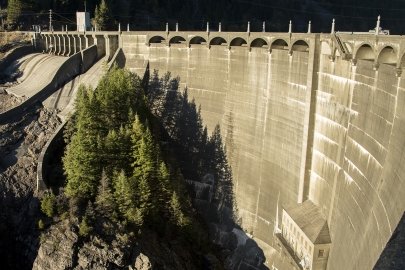 A total of $13.5 million was distributed as incentive payments among 55 hydroelectric facilities, a record, through the U.S. Department of Energy’s Hydroelectric Production Incentive Program.
A total of $13.5 million was distributed as incentive payments among 55 hydroelectric facilities, a record, through the U.S. Department of Energy’s Hydroelectric Production Incentive Program.
Marine Energy Program
Marine energy technologies transform the incredible amount of energy in the natural flow of oceans and rivers—like currents, tides, and waves—into clean electricity. The U.S. has tremendous marine energy resources. The total available marine energy resource in the United States is equivalent to approximately 57% of all U.S. power generation in 2019. Even if only a small portion of this technical resource potential is captured, marine energy technologies would make significant contributions to U.S. energy needs.
WPTO's Marine Energy Program conducts research, development, demonstration, and commercial activities that advance the development of reliable, cost-competitive marine energy technologies and reduce barriers to deployment.
The program’s vision is for a U.S. marine energy industry that expands and diversifies the nation’s energy portfolio by responsibly delivering power from ocean and river resources. To achieve this vision, WPTO’s Marine Energy Program supports R&D projects across four activity areas and one initiative. Success stories in the WPTO 2021–2022 Accomplishments Report are presented within these areas:
 Ocean Renewable Power Company developed a computational analysis tool that helped the company create new marine energy turbine foil (or blade) designs that reduce costs and increase energy capture by up to 24%.
Ocean Renewable Power Company developed a computational analysis tool that helped the company create new marine energy turbine foil (or blade) designs that reduce costs and increase energy capture by up to 24%. A project team led by Ocean Motion Technologies deployed a prototype wave energy converter technology that can harness power from waves as small as those created by boat wakes.
A project team led by Ocean Motion Technologies deployed a prototype wave energy converter technology that can harness power from waves as small as those created by boat wakes.
 Marine energy developers can now access more data on the tidal energy resources available in Alaska’s Cook Inlet, wave hindcast data up to 42 years, and a new tool to estimate how much energy their device could produce at various U.S. sites.
Marine energy developers can now access more data on the tidal energy resources available in Alaska’s Cook Inlet, wave hindcast data up to 42 years, and a new tool to estimate how much energy their device could produce at various U.S. sites. More than 100 experts shared ideas on research needs and funding gaps that must be addressed to advance marine energy and help build longer lasting and more affordable and efficient marine energy solutions.
More than 100 experts shared ideas on research needs and funding gaps that must be addressed to advance marine energy and help build longer lasting and more affordable and efficient marine energy solutions.
 During CalWave’s 10-month open-water test off the California coast, its wave energy converter technology remained operational for 99% of the deployment, and the company collected valuable data on device-ecosystem interactions.
During CalWave’s 10-month open-water test off the California coast, its wave energy converter technology remained operational for 99% of the deployment, and the company collected valuable data on device-ecosystem interactions. Researchers at the University of Hawaii took their promising wave energy converter, which could be an especially cost-effective design, from the planning phase into the build and test stage.
Researchers at the University of Hawaii took their promising wave energy converter, which could be an especially cost-effective design, from the planning phase into the build and test stage.
 Researchers advance triboelectric nanogenerator system prototypes, an emerging and potentially cost-effective technology that could be used to power instruments aboard hurricane and tsunami detection or water quality monitoring systems.
Researchers advance triboelectric nanogenerator system prototypes, an emerging and potentially cost-effective technology that could be used to power instruments aboard hurricane and tsunami detection or water quality monitoring systems.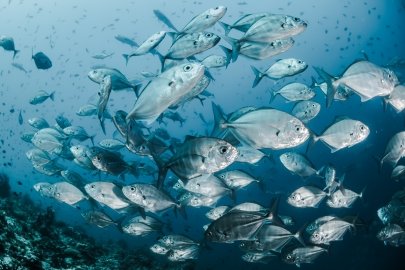 New International Report Outlines Opportunities to Integrate Marine Energy with Offshore AquacultureA team led by Pacific Northwest National Laboratory developed a first-of-its-kind report that explored how marine energy can help power offshore aquaculture.
New International Report Outlines Opportunities to Integrate Marine Energy with Offshore AquacultureA team led by Pacific Northwest National Laboratory developed a first-of-its-kind report that explored how marine energy can help power offshore aquaculture.
 WPTO supported the development of a marine energy standards business plan and operational document updates and became a participating member of the IEC System for Certification to Standards Relating to Equipment for Use in Renewable Energy Applications.
WPTO supported the development of a marine energy standards business plan and operational document updates and became a participating member of the IEC System for Certification to Standards Relating to Equipment for Use in Renewable Energy Applications.
 The Triton Initiative Field Trials team completed and published the first large-scale environmental monitoring methodology recommendations for the marine energy industry produced from field tests in the United States.
The Triton Initiative Field Trials team completed and published the first large-scale environmental monitoring methodology recommendations for the marine energy industry produced from field tests in the United States.- Construction continued on PacWave South, a grid-connected and pre-permitted wave energy testing facility in the United States, and WPTO selected projects that represent the first round of open-water testing at the site.
 The TEAMER program selected 35 technical support recipients as part of its efforts to support developers seeking access to the nation’s best marine energy testing facilities and leading marine energy experts.
The TEAMER program selected 35 technical support recipients as part of its efforts to support developers seeking access to the nation’s best marine energy testing facilities and leading marine energy experts. The National Marine Renewable Energy Centers are undertaking infrastructure upgrades to support increased marine energy testing and development with the goal of accelerating the wide-scale commercialization of marine energy technologies.
The National Marine Renewable Energy Centers are undertaking infrastructure upgrades to support increased marine energy testing and development with the goal of accelerating the wide-scale commercialization of marine energy technologies.
- The National Renewable Energy Laboratory, Pacific Northwest National Laboratory, and Sandia National Laboratories designed and upgraded existing test assets and installed new world-class testing infrastructure to advance marine energy technologies.
 New report provides a framework to assess marine energy’s potential grid benefits from supporting local resilience to complementing other renewable energy resources.
New report provides a framework to assess marine energy’s potential grid benefits from supporting local resilience to complementing other renewable energy resources.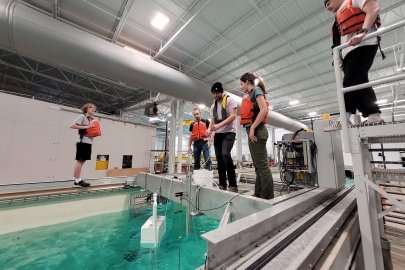 WPTO hosted the third annual Marine Energy Collegiate Competition and selected the teams to compete in the fourth annual competition.
WPTO hosted the third annual Marine Energy Collegiate Competition and selected the teams to compete in the fourth annual competition.
 WPTO selected three fellows for the 2022 Marine Energy Graduate Research Program and expanded eligibility to all graduate-level students for the 2023 program.
WPTO selected three fellows for the 2022 Marine Energy Graduate Research Program and expanded eligibility to all graduate-level students for the 2023 program.
 Competitors completed the Waves to Water Prize and produced some of the first wave-powered desalination prototypes to ever be deployed.
Competitors completed the Waves to Water Prize and produced some of the first wave-powered desalination prototypes to ever be deployed. Ocean Observing Prize Awards BUILD Contest Innovators Investigating Rechargeable Underwater VehiclesDOE announced three winners of the Ocean Observing Prize’s BUILD Contest. In June, competing teams concluded this contest by testing their marine energy-powered ocean observing prototypes in a state-of-the-art wave tank.
Ocean Observing Prize Awards BUILD Contest Innovators Investigating Rechargeable Underwater VehiclesDOE announced three winners of the Ocean Observing Prize’s BUILD Contest. In June, competing teams concluded this contest by testing their marine energy-powered ocean observing prototypes in a state-of-the-art wave tank.
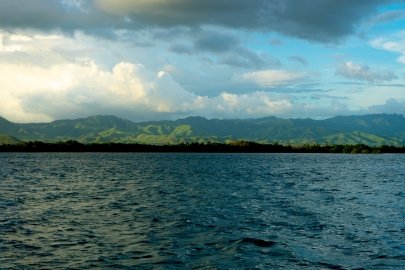 DOE announced 12 competitively selected remote and island communities for the second Energy Transitions Initiative Partnership Project cohort.
DOE announced 12 competitively selected remote and island communities for the second Energy Transitions Initiative Partnership Project cohort. The National Renewable Energy Laboratory deployed its first wave-powered desalination test device in North Carolina’s Outer Banks.
The National Renewable Energy Laboratory deployed its first wave-powered desalination test device in North Carolina’s Outer Banks.
 In Fiscal Year 2022, WPTO released a funding opportunity representing the first significant funding the U.S. Department of Energy is investing in a blue economy market.
In Fiscal Year 2022, WPTO released a funding opportunity representing the first significant funding the U.S. Department of Energy is investing in a blue economy market.
WPTO's Hydropower e-newsletter features news on R&D and applied science to advance sustainable hydropower and pumped-storage technologies.
WPTO's Marine Energy e-newsletter shares news and updates on tools, analysis, and emerging technologies to advance marine energy.
The WPTO e-newsletter brings funding opportunities, events, publications, hydropower, and marine energy updates directly to your inbox.


